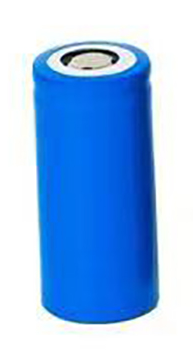The length of time that a 12v 7ah battery can be used depends largely on the power requirements of the connected device. Generally speaking, a battery of this size can support equipment operation for about 1 to 1.5 hours under moderate power load. However, if the connected device is more powerful, the battery's usage time may be shortened accordingly; conversely, if the device is less powerful, the usage time may be extended. In addition, the battery's runtime is affected by factors such as the health of the battery itself and the environment and conditions in which it is used. For example, battery aging, too high or too low ambient temperature, frequent charging and discharging, etc. may affect the battery's usage time.
In actual use, in order to more accurately understand the usage hours of 12v 7ah batteries, it is recommended to test according to the power requirements of specific equipment, and pay attention to maintaining the battery's health status during use, avoiding over-discharging and prolonged charging to prolong the service life of the battery. Overall, the length of use of 12v 7ah batteries is a relatively flexible range, depending on a variety of factors.

When it comes to the battery's runtime, many factors affect the 12v 7ah battery's operating time, such as the quality of the battery, the environment in which it is used, and the load current, etc. A 12v 7ah battery is actually a battery with a rated voltage of 12 volts and a rated capacity of 7 ampere hours (Ah) of lead-acid or lithium-ion batteries. In this article, we will discuss in detail how a 12v 7ah battery works, how many hours it can last, and related use cases to help users better understand and utilize this type of battery.
12v 7ah refers to a battery with a nominal voltage of 12 volts, while 7 Ampere-hour (Ah) indicates that the battery can provide 7 amps of current for 1 hour of operation under ideal conditions. Both lead-acid and lithium-ion batteries consist of two electrodes and an electrolyte, which are charged and discharged through an electrochemical reaction. During discharge, the chemical energy of the battery is converted into electrical energy for use by external circuits; the charging process is reversed, where electrical energy is converted into chemical energy and stored. Factors such as the efficiency of this energy conversion, the internal resistance of the battery, and self-discharge all affect the actual time of use of the battery.
Lead-acid batteries undergo a chemical reaction between lead and lead dioxide and sulfuric acid during the discharge process, while lithium-ion battery discharge involves the movement of lithium ions between the positive and negative electrodes. Compared to lead-acid batteries, lithium-ion batteries have higher energy density, lower self-discharge rates, and longer cycle life, and therefore provide a longer period of use.
Actual use time depends on the amount of electrical energy provided by the battery i.e. load current. If the load current is equal to 1 Ampere (A), theoretically the 12v 7ah battery will provide about 7 hours of use. If the load current is 0.5A, the usage time will increase to about 14 hours. However, the reality is far more complex than this as there are many factors that can affect the discharge rate and efficiency of a battery.
For example, the internal resistance of the battery causes some of the energy to be converted to heat and lost during discharge, and the actual number of hours available is reduced as a result. At the same time, the capacity of a battery decreases as it is used and ages, which results in fewer hours of actual use. The environment in which the battery is used, especially the temperature, also has a significant effect. In low temperatures, the battery's discharge efficiency decreases, reducing the time it can be used; high temperatures may accelerate the aging of the battery, which may also shorten its life.
With the development of battery technology, modern 12v 7ah battery design tends to higher efficiency and longer service life. However, users need to follow the battery manufacturer's recommendations, such as proper charge/discharge cycles and storage conditions, to maximize battery performance and usage time.
To calculate the use time of a 12v 7ah battery, you can use the simple formula below: Use time (hours) = Battery capacity (Ah) / Load current (A) For example, if there is a device that requires 3A of current, then a 12v 7ah battery could theoretically provide approximately 2.33 hours of runtime (7Ah / 3A = 2.33 hours). However, this is a calculation obtained assuming the battery is fully charged and 100% efficient. In practice, users need to take into account factors such as efficiency, battery aging, etc. and adjust the expected usage time accordingly.
In addition, many batteries will experience a voltage drop when they are close to being fully discharged, and the voltage drop may cause the device to fail to work properly. Therefore, when planning battery usage time, a margin should be set aside to prevent the battery from failing to meet demand at critical moments.
Finally, it is recommended that users understand the technical specifications and manufacturer's recommended conditions of use when selecting and using 12v 7ah batteries. Proper use and proper maintenance of the battery will increase its service life and the reliability of its work.
In summary, the actual usage time of 12v 7ah batteries is affected by a number of factors and cannot be determined simply by theoretical capacity. Users should consider factors such as the actual load of the equipment, the actual performance of the battery, and the environment in which it is used in order to predict the battery's usage time and make appropriate arrangements.